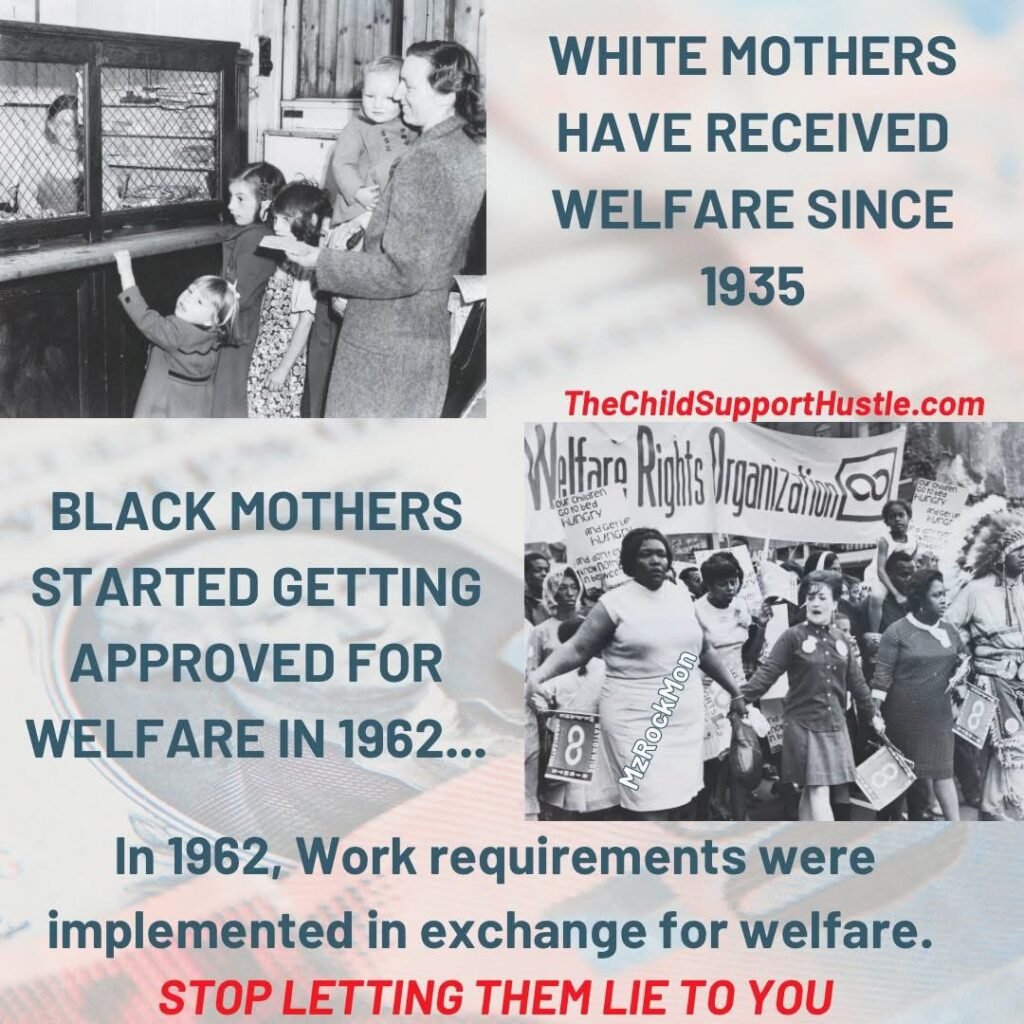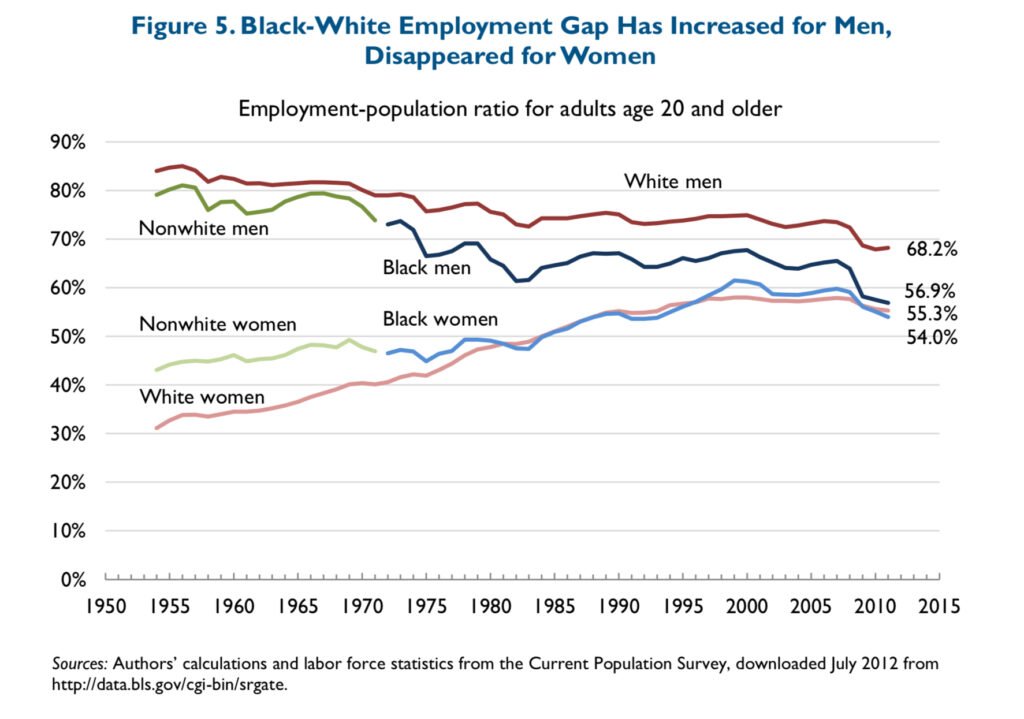Kenya N. Rahmaan
When people bring up the welfare state and its negative impact on the Black family, the corresponding data that almost always accompanies the claim is a decrease in two-parent homes. The percentage of non-white children residing in homes with their married parents has shown a dramatic decline based on the data published by the US Government. According to the late Democratic Senator and former Assistant Secretary of Labor, Daniel Patrick Moynihan (1992), in 1964, about 75 percent of Black children under the age of six lived in a married-couple family; by 1990, this ratio had dropped to 37.4 percent. Mailbox money, otherwise known as welfare, has been blamed for over sixty years, but the problem may lie elsewhere.
For starters, a significant movement began at the turn of the century that would affect every aspect of the Black community for generations, and most fail to mention it in negative welfare state renditions. Reconstruction allowed newly freed, melanated Americans to move from the South to different regions. The longest and most impactful exodus in America is known as the Great Migration. In the 1920s, more than 750,000 African Americans left the South, partly driven by economic concerns and frustration with the straitened social conditions there (Library of Congress).
Although it is arguable, the National Archives reports that the Great Migration lasted from 1910 to 1970. Based on the African American Heritage section of the National Archives, the driving force behind the mass movement was to:
- escape racial violence,
- pursue economic and educational opportunities,
- and obtain freedom from the oppression of Jim Crow.
What is problematic when a person continuously sees the same statistics along with the same talking points about welfare destroying the Black family is all of the missing information. Consider when the parents decided to uproot their families from the homes they knew and their kinships to travel to unknown territories during perilous times.
In the middle of relocating one’s entire life, people are only concentrating on whether or not Black parents were married and living together while raising children. Based on the tumultuous times during the Great Migration, family structures are a low priority to record and compare. Over the years, many have concluded that there are a multitude of issues that Moynihan and others could have focused on to emphasize how Black families have changed since Lyndon B. Johnson declared the War on Poverty.
Instead, American officials tasked with making America great decided to downgrade an already struggling demographic and offer minimal assistance during a decades-long health disparity. Based on reports of racial violence and health-related pre-mature death rates for Black males during the Jim Crow Era, a two-parent household could have been in contract only but single parent in reality. Underreporting household status in Black communities was not uncommon during the Civil Rights Era for multiple reasons. According to Charmaine Runes (2019) from the Urban Institute, reasons for Census undercounting in Black communities can include people having multiple addresses or different family structures.
Moynihan did not inform the public that when he labeled Black families ‘pathological’ because of the lack of nuclear family formations, Black males were dying much faster than white men. Black men had moved in large numbers into the nation’s most hazardous industries and jobs, with exposure to many chemicals and environmental factors that can affect health. Still, Congress did nothing to implement safer working conditions or assist Black breadwinners in finding better-paying jobs. Instead, politicians such as Daniel Patrick Moynihan wrote a scathing report admonishing Black American families, homes, and ultimately all weaknesses.
Instead of concentrating on why there were two-parent homes, there could have been a concerted effort to prevent the need to expand welfare. Closing the income gap between white and non-white citizens would have benefited the nation and lifted single parents out of poverty. In the years that people claim were prosperous for Negroes, married and single people were earning a fraction of their counterparts. According to Moynihan (1965), in 1963, the median income of non-white males had risen to $2,507, as against $4,816 for whites. Closing the wealth gap has never appeared as a pressing rival to the nuclear family structure.
Today people praise Moynihan’s infamous report, The Negro Family: The Case for National Action, as an alleged what would become of the Black community if the government did not run interference. Strangely, the report did not focus on income disparities or convict leasing, both of which significantly contributed to the African American communities struggling to rise from poverty. Instead, the labor secretary chose to criticize the family. The critique has lasted for more than half a century.

According to Gregory Acs, Kenneth Braswell, Elaine Sorensen, and Margery Austin Turner (2013), Moynihan described a “tangle of pathologies” from disintegrating families to:
- poor educational outcomes,
- weak job prospects,
- concentrated neighborhood poverty,
- dysfunctional communities,
- and crime.
All of the obstacles identified by the report and later by the Lyndon B Johnson (LBJ) Administration would have been mitigated by closing the wealth gap. Instead, LBJ and both political parties, moving through the decades, chose to concentrate on marriage and one-parent and two-parent homes. Moynihan saw the breakdown of the nuclear family as the fundamental source of weakness in the Black community (Acs et al.)
Welfare benefits helped poor families when seasonal employment and racist policies left Black Americans destitute. But the US Government, in its strategic approach to controlling a narrative, managed to convince the country that Black Americans, who were paid less for working more, were lazy. Legislators, lobbyists, and regular racists managed to blame decreased two-parent homes in the Black community on mothers trading husbands in for welfare when income deficiency was the cause of poverty. The government has been committed to maintaining, if not widening, the wealth gap between the non-Black and Black demographics.
André M. Perry, Hannah Stephens, and Mannan Donoghue (2024) found that between 2019 and 2022, the racial wealth gap increased by $ 49,950, adding up to a total difference of $240,120 in wealth between the median white and Black households. Presidential candidate Nikki Haley made the statement that ‘America has never been a racist country,” but the statement is peculiar considering the century-old wealth discrepancy. Black America has disproved every stereotype that racists have used to justify generational poverty. Racism is the only reason for the destruction of the Black family, if there is any at all.
References:
Acs, G., Braswell, K., Sorensen, E., & Turner, M. A. (2013, June). The Moynihan report revisited. Data and evidence to advance upward mobility and equity | Urban Institute. https://www.urban.org/sites/default/files/publication/23696/412839-The-Moynihan-Report-Revisited.PDThele lifespaof black males n grows but trailbehind s the rest. (1977, December 14). The Washington Post. Retrieved January 25, 2024, from https://www.washingtonpost.com/archive/local/1977/12/14/black-male-lifespan-grows-but-trails-the-rest/2a0e5cbb-b363-4437-93a8-d75d6d3a63a5/
The Library of Congress. (n.d.). Moving north, heading west | African | Immigration and relocation in US history | Classroom materials at the Library of Congress | Library of Congress. https://www.loc.gov/classroom-materials/immigration/african/moving-north-heading-west/
Moynihan, D. P. (1965, March). The Negro family: The case for national action. DOL. https://www.dol.gov/general/aboutdol/history/webid-moynihan
National Archives. (2021, June 28). The Great Migration (1910-1970). https://www.archives.gov/research/african-americans/migrations/great-migration
Ricketts, E. (n.d.). The origin of black female-headed families. INSTITUTE FOR RESEARCH ON POVERTY – Research | Training | Policy | Practice – UW–Madison. https://www.irp.wisc.edu/publications/focus/pdfs/foc121e.pdf
<
p id=”a6″>Urban Institute. (2019, February 26). Following a long history, the 2020 census risks undercounting the Black population. https://www.urban.org/urban-wire/following-long-history-2020-census-risks-undercounting-black-population

